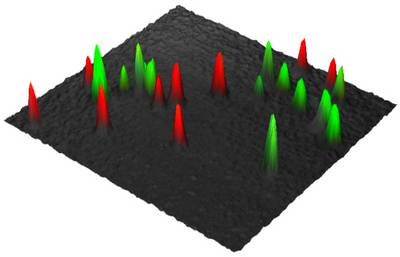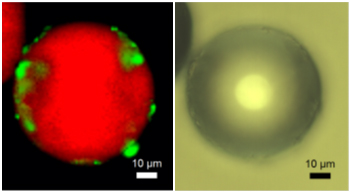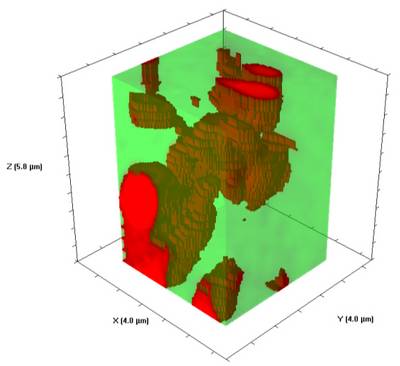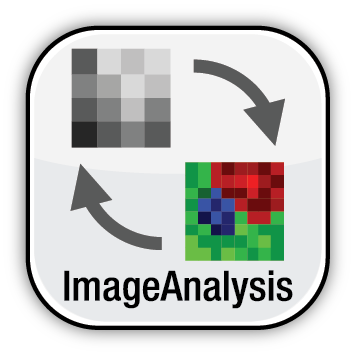Images can be created using univariate “cursor” functions, for fast display of peak height, area, position and width distribution; in addition, multivariate decomposition and clustering techniques can be used for creating high quality images even from the most challenging of chemical systems.
The software can be used to work with multi-dimensionsal datasets, including 1D profiles (such as line, time, kinetic, temperature studies), 2D images (such as XY surface maps) and 3D volume images (i.e., confocal XYZ maps).
The following examples show some of the stunning images which can be created with LabSpec 6. More images are available in our image gallery.

Single bacteria cells, labelled with carbon isotopes C12 and C13
[Data courtesy: Dr Wei Huang, Department of Civil and Structural Engineering, University of Sheffield, United Kingdom]

Peak fit maps of monocrystalline synthetic diamond, showing variation of peak intensity (left), position (center) and width (right).
[Data courtesy: LIST Institute, CEA (Commissariat à l'énergie atomique et aux énergies alternatives), Saclay. France]

A modified polystyrene bead showing co-precipitated porphyrinmaterial on the bead.
[Data courtesy: Dr Liangrong Yang, Institute of Process Engineering, Chinese Academy of Science, China ]

3D distribution of barium sulfate in a polyethene matrix.




